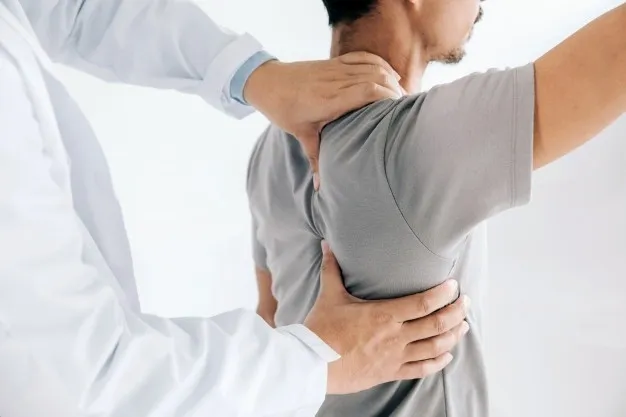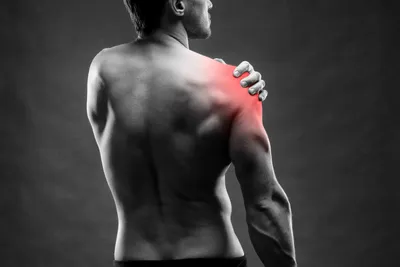
Orthopaedic Conditions Affecting the Shoulder

The shoulder (glenohumeral joint) is a ball and socket joint and is the most mobile joint in the body, which allows us the ability to place our hands where it’s needed. To allow for this movement, the joint is inherently quite unstable, with the ball being 4 times the size of the socket. The soft tissues around the joint helps to keep it stable. Acute shoulder injuries as well as chronic wear-and-tear of these structures can lead to shoulder pain.
Rotator Cuff
There are 4 tendons that wrap around the humeral head that help keep it stable and help it to move. These include subscapularis, supraspinatus, infraspinatus and teres minor. These tendons can be damaged with acute injury as well over time with ageing and wear-and-tear. 1 in 3 people over 60 years will have small rotator cuff tears, but most of these tears do not cause any symptoms. These are tears that happen with ageing and degeneration of the tendon.
Most of these rotator cuff tears (depending on the situation) will not need any surgery. However, over time tears have a tendency to become larger, so some tears will require surgery.
Acute tears (e.g. following a fall or other injury) are a different problem- commonly being larger and usually need surgery.Shoulder cuff tear treatment needs to be tailored to your circumstances, and the presence of one does not necessarily mean need for surgery straight away.
Shoulder impingement and bursitis
The shoulder is like an orchestra. The ball and socket joint of the shoulder does about 50 percent of the movement whereas the scapula (wing-bone) rotating on the chest wall does the other 50 percent. These have to work in unison to allow for fluid range of motion.
When this orchestra stops working in sync, shoulder impingement can occur, where the bursae (lubricating sacs around the shoulder) start getting pinched. This leads to bursitis, which is a very painful condition (the bursa has the highest concentration of nerve fibres in the shoulder). Commonly this means shoulder pain with overhead movements (e.g. putting washing on the line).
Subacromial injections with local anaesthetic and corticosteroids, and physiotherapy (including scapula training and rotator cuff strengthening program) is the first line treatment for this problem, and surgery is only needed in recalcitrant cases.
Adhesive Capsulitis (Frozen Shoulder)
The shoulder joint is covered by a joint capsule: this is like a thin glad-wrap layer around the shoulder. This shoulder capsule can become inflamed for reasons that we don’t fully understand yet. This condition is called adhesive capsulitis (frozen shoulder).
When developing frozen shoulder, severe pain can be present, but the hallmark is stiffness. It is more common in females, as you get older (40-60 years), and with certain medical conditions such as diabetes.
The first line of treatment is physiotherapy and a trial of a hydrodilatation injection. Likely most things in the human body, nature is a great healer, and about 70% of patients get better within 6 months. In recalcitrant cases, surgery to release this capsule is very effective.
Biceps Tendinopathy
Biceps muscle (in your arm) originates from 2 sites: the long head originating from within the shoulder and travelling between the supraspinatus and subscapularis tendons (part of the rotator cuff), and the short head originates outside the shoulder. The long head only adds about 10% to the biceps, but despite being small, it punches well above its weight as being a pain generator.
The sheath around this tendon can get inflamed, or where it originates from came become damaged (SLAP tear) or it can be a pain generator when the supraspinatus or subscapularis is injured (like collateral damage). Pain from the long head can be felt as pain running down the arm to the biceps region. A corticosteroid injection can be trialled first, but if symptoms persist then surgery may be needed to move and reattach this tendon (biceps tenodesis).
Acromio-clavicular Joint (AC joint)
The AC joint is what connects your shoulder to the rest of the skeleton. It’s a very complex joint and can be injured with acute injuries (such as falls during sports) as well as become arthritic with time. However, most patients with AC joint arthritis may not have pain due to this. If painful, then a diagnostic local anaesthetic and corticosteroid injection can help; and if needed surgery to clean this joint can be performed.
Shoulder Arthritis
Shoulder can develop osteoarthritis and rotator cuff arthropathy, which happens over time following large rotator cuff tears. Pain and stiffness are the hallmark symptoms with shoulder arthritis.
The treatment is based on your type of arthritis as well as age and functional level. Joint replacements (e.g. metal ball and sockets) is the gold-standard for shoulder arthritis. However, in young patients key-hole surgery to clean up the joint can help buy some time before proceeding to a joint replacement.
Shoulder Instability
The shoulder is inherently a very unstable joint: so it is the most commonly dislocated joint in the body. Closed reduction, followed by a period of physiotherapy is the first line of treatment. However, surgery is indicated as treatment for recurrent shoulder dislocation, and in certain instances as the first line depending on the circumstances (e.g. if there is a significant fracture of the bones). The type of surgery will depend on the age and demands of the patient (including sporting activities), and what structures are damaged (especially bone loss).
Our Expertise
We specialise in treating all types of these common shoulder injuries. Gayan is a keen arthroscopic (key-hole) and open orthopaedic shoulder surgeon. He performs a wide-range of surgical procedures of the shoulder including rotator cuff surgery, treatment of frozen shoulder, labral tears including biceps issues, shoulder instability, and shoulder joint replacement.
He is however a firm believer in the old adage- ‘a good surgeon not only knows how to operate but when to operate’. Sometimes surgery should be the first solution, but more often it is the last solution.
We will take the time to understand your problem, and tailor your treatment to best suit your needs based on the most up-to-date knowledge. Commonly this would mean trying conservative treatments for a period of time. When shoulder surgery is recommended we will discuss with you other options that are available so that you can make an informed decision.
